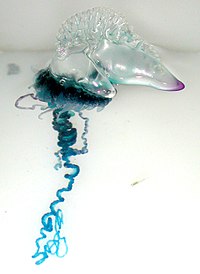
Photo from wikipedia
Nickel fluoride complexes of the type [Ni(F)(L)2(ArF)] (L = phosphine, ArF = fluorinated arene) are well-known to form strong halogen and hydrogen bonds in solution and in the solid state.… Click to show full abstract
Nickel fluoride complexes of the type [Ni(F)(L)2(ArF)] (L = phosphine, ArF = fluorinated arene) are well-known to form strong halogen and hydrogen bonds in solution and in the solid state. A comprehensive study of such non-covalent interactions using bis(carbene) complexes as acceptors and suitable halogen and hydrogen bond donors is presented. In solution, the complex [Ni(F)(iPr2Im)2(C6F5)] forms halogen and hydrogen bonds with iodopentafluorobenzene and indole, respectively, which have formation constants (K300) an order of magnitude greater than those of structurally related phosphine supported nickel fluorides. Co-crystallisation of this complex and its backbone-methylated analogue [Ni(F)(iPr2Me2Im)2(C6F5)] with 1,4-diiodotetrafluorobenzene produces halogen bonding adducts which were characterised by X-ray analysis and 19F MAS solid state NMR analysis. Differences in the chemical shifts between the nickel fluoride and its halogen bonding adduct are well in line with data that were obtained from titration studies in solution.
Journal Title: Faraday discussions
Year Published: 2023
Link to full text (if available)
Share on Social Media: Sign Up to like & get
recommendations!